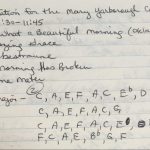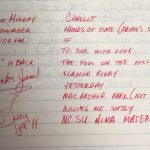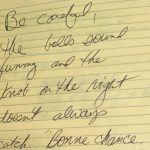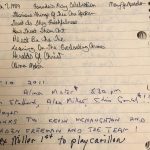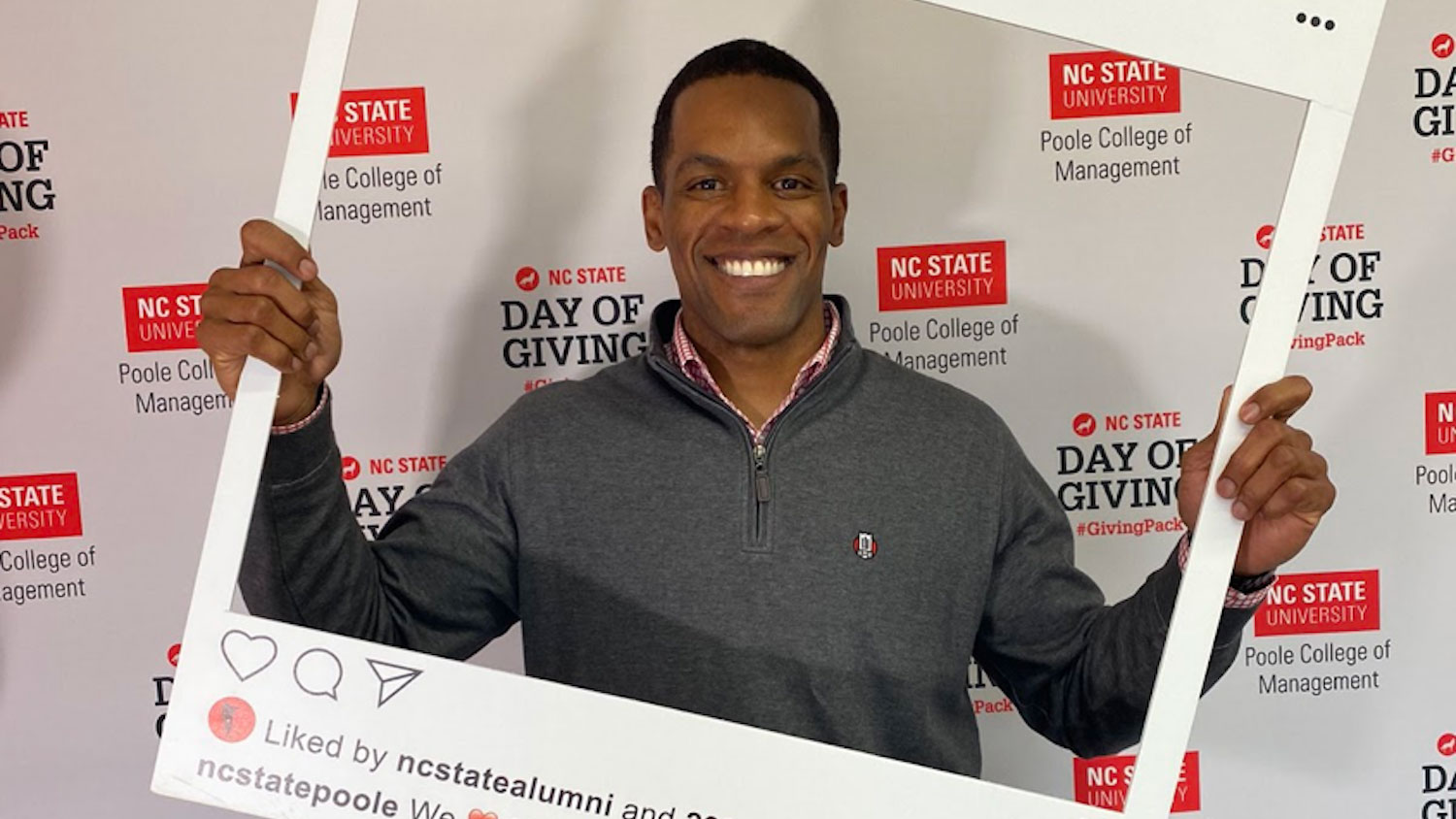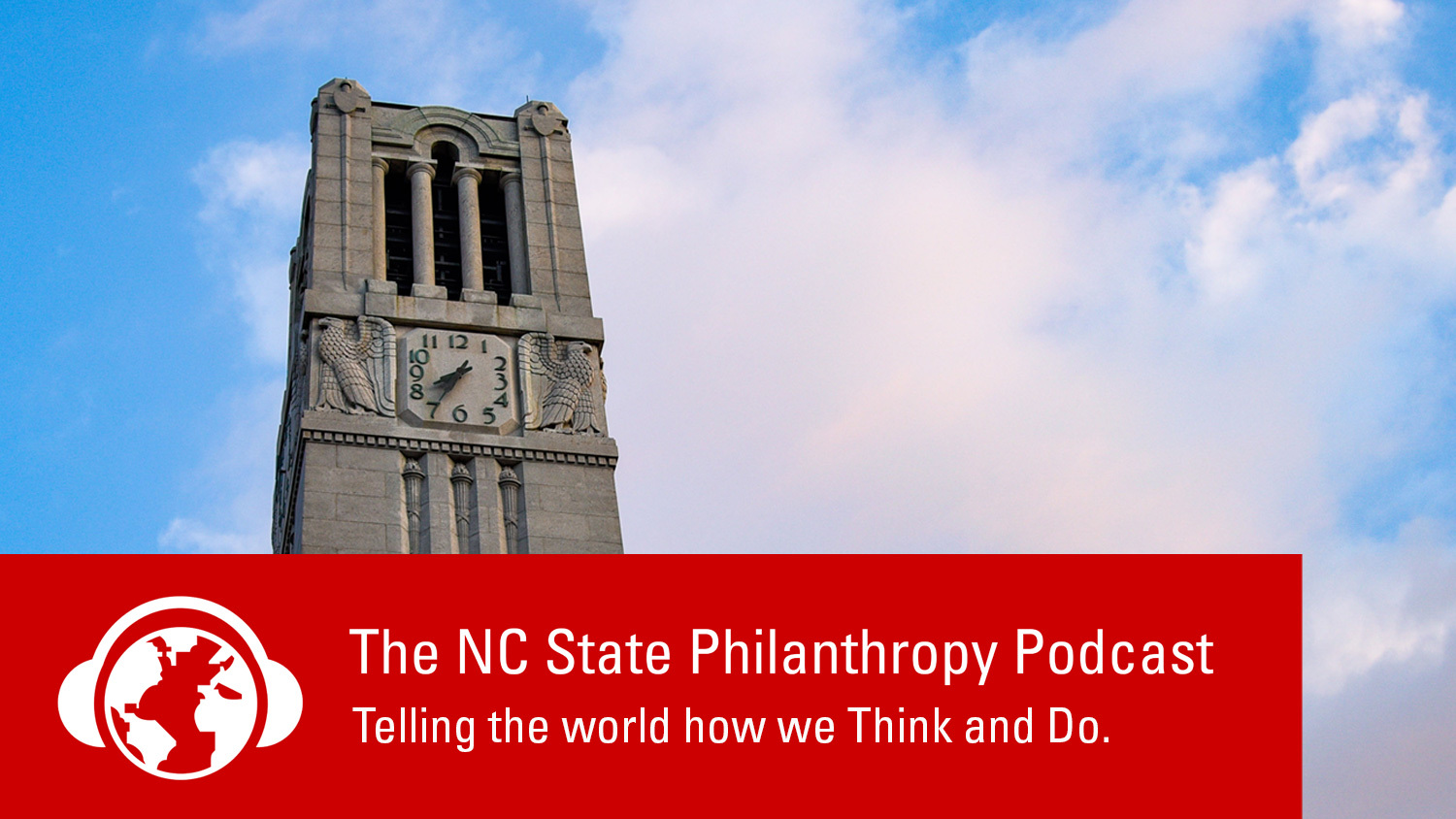All in Good Chime
For decades, the NC State community enjoyed regular concerts ringing out across campus from the Memorial Belltower. With a new chapter of Belltower history about to begin, alumni carillonneurs share a few of their favorite memories of playing those concerts as students.
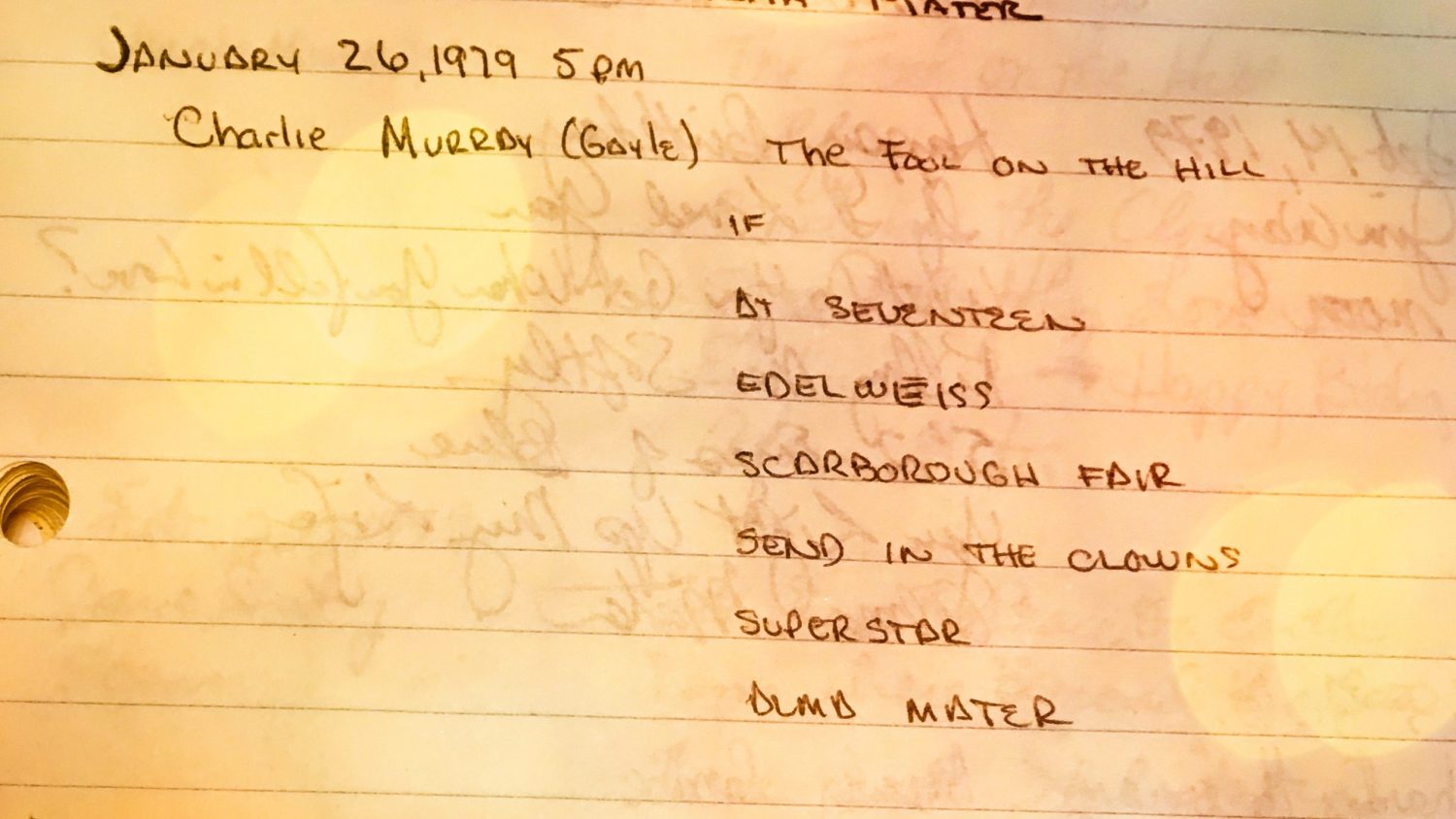
NC State’s Memorial Belltower has existed for decades without real bells, but it hasn’t stayed silent. Imagine heading to lunch on Hillsborough Street or to an evening meeting and hearing chimes ringing out with familiar hymns, classical standards … and a few bars of “Old Town Road” or the latest from Lizzo.
That kind of musical interlude was once a regular part of NC State life. In the late 1940s, the first of three electronic carillon instruments connected to the Belltower was installed. Music periodically marked special occasions. And for many years through the 1980s, at least once a week, the Wolfpack community would enjoy afternoon or evening Belltower concerts.
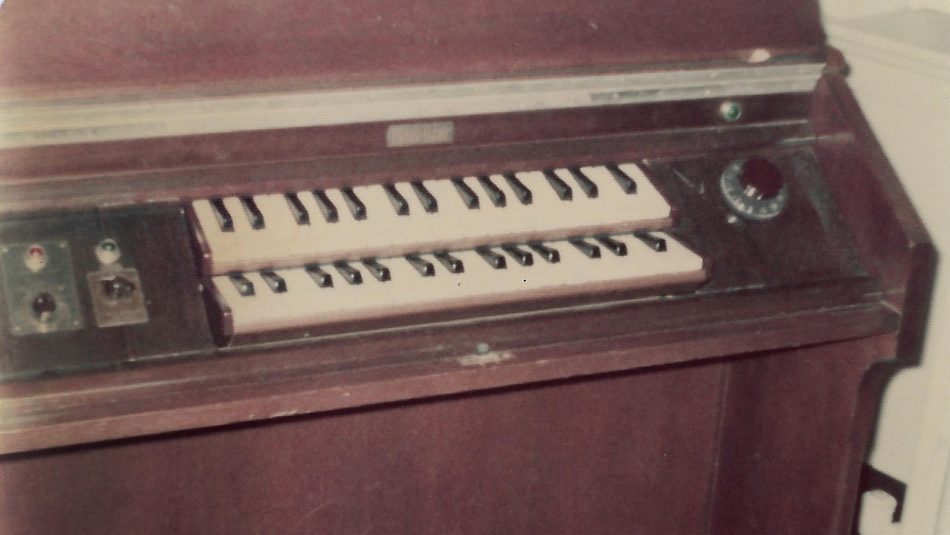
An interested passerby might stop at the base of the tower and wait to see who emerged from the Shrine Room door, not realizing that the carillon player — or carillonneur, as they were called — wasn’t inside.
Tucked away in a small room on the lowest level of Holladay Hall, students from all majors shared their musical talents using an instrument that looked like a piano, played like an organ and sent bell sounds through the Belltower’s speakers and across campus.
Common songs included “Battle Hymn of the Republic,” “Für Elise,” “Edelweiss” and hymns such as “How Great Thou Art.” Occasionally, one would hear pop songs such as “Bridge Over Troubled Water,” “Eleanor Rigby” or “Killing Me Softly.”
The concerts had one thing in common: “We always ended the set with the alma mater,” Lennie Collins ’89 remembered.
Playing Through History
Ralph Daniel, who graduated from NC State in 1964 with a degree in electrical engineering, began playing the carillon in 1958. He kept a personal log of what he played, and his experiences are cataloged in Curtis Craver’s The History of Music at North Carolina State University.

“I was allowed freedom to play almost anything I wanted to. But being a student, I didn’t have the finances to purchase much music,” Daniel wrote. “About that time, an LP came out called A Christmas Sound Spectacular … In those days, one could actually play the LP at the store before buying. I … pulled a Mozart-memory stunt, returning to the campus to quickly write down what I had heard on the record.”
Daniel’s Christmas concerts were front-page news in student newspaper Technician, and he even sent out publicity notices for summer “Twilight Serenades,” which were announced on the local WPTF radio station.
A new carillon was installed during Daniel’s tenure in 1960, and he came back to campus in 1986 to test its replacement, a Maas-Rowe model. Daniel said recently that he hopes to travel from Marietta, Georgia, after the tower’s bells are installed as part of the current $6.5 million completion and restoration project in order to become the first person to play all four carillon instruments.
His most memorable moment as a carillonneur came in 1963, after President John F. Kennedy was assassinated. “The daily noon recitals were suspended during the time of national grieving,” Daniel said. “Someone called the music department and suggested that we should toll the bells for him on the day of his funeral. … At noon I was in the chimes room doing that, when I heard something outside the Holladay Hall window. Without any previous coordination between us, an honor guard from the Pershing Rifles was slowly marching toward the tower, playing their drums muffled in black cloth. It was all I could do to keep my composure until the tolling was finished.”
“The Belle of the Belltower”
Miriam Bailey Gardner ’74 entered NC State as an aerospace engineering major with both her private pilot’s license and 15 years of piano playing under her belt. She became a carillonneur during her first semester and played throughout her four years as a student. Being part of Belltower history was just one of many musical activities: She also participated in the Marching Band, choirs and ensembles and accompanied musical theater performances.
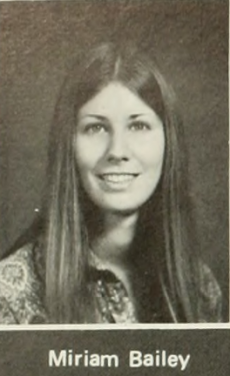
Such wide-ranging interests and dedicated commitment to the carillon attracted coverage from local newspapers, one of which nicknamed her the “Belle of the Belltower.” Articles detailed Gardner’s practice schedule — she played for 45 minutes before switching the mechanism to channel music to the tower’s speakers so others could hear — and her willingness to take student requests, including songs from Cat Stevens and the Rolling Stones.
Though she never signed her name, Gardner kept a record of her daily concerts in the carillon room. Her handwriting fills pages of a spiral-bound notebook, detailing four years’ worth of familiar tunes she played, like “I’ve Been Working on the Railroad,” and pop hits like “Fire and Rain.”
Eventually, she changed her major to soil conservation, going on to become the Lee County soil conservationist in 1977. She was the only woman in the state to hold the role at that time.
Recently, Gardner’s husband, Bill, began assembling a scrapbook with the newspaper articles and other mementos of her carillonneur career after she was diagnosed with early-onset Alzheimer’s. In 2018, the couple established the Miriam Bailey Gardner Music Scholarship Endowment to honor her musical legacy and to inspire current and future student musicians at the university.
Broken Knobs and Election Years
After Gardner graduated, Nancy Ridenhour ’76 took over on the carillon, playing three days a week at first. Additional students were later brought in to ensure that there was a player five days a week and to create a pipeline of carillonneurs so that any individual student’s graduation or change in availability wouldn’t halt the practice.
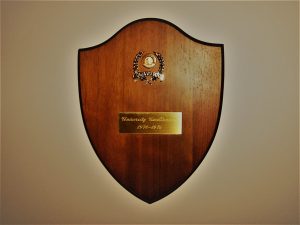
It wasn’t uncommon for a student to play for only a semester or two.
Like Gardner, Ridenhour would practice before her shift began, for 40 minutes or so. “I still have pieces of music at my house with notes — ‘not good for chimes,’ ‘only this line for chimes,’” she said.
“We had to play songs that were relatively simple,” Scott Bradshaw ’77 said. “It didn’t take long to learn the things you couldn’t do. The biggest was don’t listen to yourself because of the delay in sound.”
When a musician pressed the note on the carillon’s keyboard, it took several seconds for the note to be heard through the tower. “If you waited to hear it, you’d eventually stop playing,” Bradshaw said. “You’d just have to know that what you were playing was right.”
One afternoon, Ridenhour’s song list included “La Spagnola” and “Santa Lucia.” Shortly after, a note from an assistant shop supervisor at the nearby College of Design arrived, addressed “for the girl who plays chimes” and expressing appreciation for her playing.
“It made me know someone was paying attention and that they could tell what it was,” she said.
Ridenhour has stayed connected to NC State since graduation, serving on boards with the Alumni Association and the College of Sciences. She recently established a planned gift that will support the college, Park Scholarships and the Caldwell Fellows program. In September 2019, she was named the College of Sciences’ Distinguished Alumnus of the Year.
Listen
Chiming in From Commencement
In spring of 1975, Nancy Ridenhour played the carillon for commencement, with her 15-minute concert taking place as graduates prepared to enter Reynolds Coliseum — and concluding, of course, with the alma mater.
To capture the moment, her mother parked outside the Belltower with a cassette tape deck to record the concert, which was digitized in 2011 by NC State University Libraries.
While Ridenhour, like Daniel, kept her own record of songs she played, as more students participated, the carillon log book took on a different form. It became a space not just to keep a list of songs but to collaborate, trade shifts and share advice about a sometimes fussy piece of equipment. “With the doors closed on a closet-like room, there were going to be some problems,” Ridenhour said. “You just did the best you could with it.”
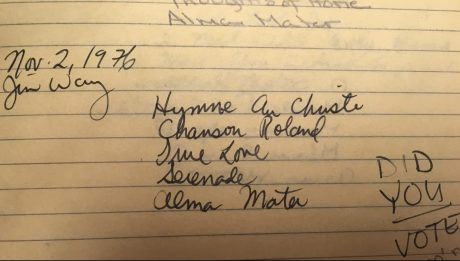
“The bells sound funny and the knob on the right doesn’t always catch,” one note reads. The fix didn’t last long; a few pages later comes another reminder that although the knob was once again broken, it could be “propped up with a piece of paper.”
Other notes include heartfelt holiday greetings and good-luck graduation wishes. Many of the carillonneurs never physically crossed paths, but the book gave them a way to forge a connection — and encourage others to engage in their civic duties. In 1976, a block-letter question faced anyone who came across the carillon book that day: DID YOU VOTE?
Former Technician editor Lucy Procter Ringland, who played the carillon in the late 1970s before returning to NC State to complete her degree in 1992, is one of the lucky players who did know some of the other carillonneurs.
“We would meet up over in the music department and chat every once in a while about things like how high you could raise the window and still get cool air without being thrown off by the disconnect between what the bells sounded like and what you were playing,” she said. “Or you’d pass somebody on campus and go, ‘Low C isn’t quite acting right today,’ and you’d work around whether or not you could play chords that day or just a simple melody.”
And if she were ever in need of a conversation starter at a party, Ringland had just the thing. “Someone would say, ‘What do you do?’ And I’d say I play the bells in the Belltower. ‘But there are no bells.’ And then I’d have to explain,” she said, laughing.
Engineering Time for Music
Many students discovered the opportunity to play the carillon through connections in the music department. However, some sought out the role, including Caldwell Fellows alumna Jane Holland Monaco ’87.
“I loved hearing familiar tunes while walking on campus or along Hillsborough Street. I envisioned long ropes attached to large bells high in the tower with a muscular bell ringer — perhaps multiple musicians — pulling the ropes in sync to produce the melodies,” Monaco said. “With some music experience in piano and handbells, I inquired about how to become a bell ringer. Imagine my surprise when I learned no ropes and no bells were involved, just a person sitting at a keyboard with a speaker system. I was delighted to be ‘a Belltower ringer’ even without any bells!”
Tammy Boger Wollum ’87 learned about the carillon through a music theory class. Having played piano for nine years before arriving at NC State, she thought the opportunity sounded like fun and signed up to be a carillonneur during her senior year. “Für Elise” was one of her favorites and her now-father-in-law, who was a professor at the time, would sometimes come to hear her play.
“I liked the idea that I was sending music out,” she said.
Playing the carillon served as a valuable way for students across majors to exercise their creativity. Cynthia Gordon Nash ’80 had played piano for 12 years and taken lessons at Salem College before coming to NC State. She missed having an outlet for her music as a student before finding out about the Belltower.
“It was a nice break for me,” Nash said. “It kept me tied to my music.”
Ken Hersey ’89 studied electrical engineering, and serving as a carillonneur was a natural extension of his other NC State musical activities: playing trumpet and soprano cornet and serving as an accompanist.
“Music was really an important part of my time at NC State, even as an engineer,” he said.
For Joyce Lackey Boor ’83, playing not only balanced out her chemical engineering and pulp and paper studies but helped offset some of her initial homesickness.
“At first I was nervous, but I decided it would be an extremely unique experience,” she said. Looking at the entries in the log book recently, Boor noticed she played the day before her 18th birthday — her first away from her family in Florida.
It was a solitary thing. You’d go there, write in the book, pick out the songs, play and leave. The rest of the world had no idea what was going on there. The average person walking on campus would assume it was automated. It was a really precious experience.” — Ken Hersey ’89
A student’s musical training often influenced what they chose to play.
“I grew up playing classical piano,” said Jennifer Stout Barker ’89. “I played some of that, but the way the bells work, it probably wasn’t a great idea, in retrospect.” Like those who played before her, she noted the challenge of playing without knowing how it truly sounded.
“I think I played Beethoven’s ‘Moonlight Sonata.’ Can you imagine walking through campus and hearing that?” she joked, adding, “I wondered if students were walking around thinking, ‘Wow … that new fight song is weird.’”
Kimberly Titmus Przybyl ’92 has enjoyed a lifelong connection to music and to NC State — her father, Edward B. Titmus, is an active alumnus who supports the arts and the Caldwell Fellows program. However, she planned to take a pause from these activities when she arrived at college.
“That didn’t happen,” she laughed.
Przybyl quickly became involved in both the music and theater departments, playing an hourlong concert on the carillon during NC State’s 100th anniversary celebration in 1987. She stays connected as a volunteer and donor — including the creation of the Kimberly Titmus Przybyl Music Endowment — and looks back fondly on her time as a carillonneur.
“With the keyboard being in the basement of Holladay Hall, you got to see a lot of people coming and going as you’re trying to sneak down there in your shorts and T-shirt, never knowing who you were going to run into,” Przybyl said. “It was interesting to be on that side of campus, in that building. It wasn’t something everybody got to do. That made it a lot of fun, too.”
The fact that the carillon room was disconnected from much of everyday student life, as campus expanded over the years, added a level of mystique to being a carillonneur. Nash recalled that it was quite a walk from her dorm, and even those who lived nearby were not immune to underestimating the time it would take to get to Holladay.
“The Belltower would chime for the hour, and then we’d play. I lived in Bagwell, right on Pullen Road,” Barker said. “I can remember walking up that sidewalk for my shift, hearing the chiming of the hour, and thinking, ‘Oh, my gosh!’ I was literally sprinting as fast as I could. The route is a little winding; you’ve got to go through all these offices. I remember bursting in there, and I sat down just as the chiming finished.”
The Final Entry
Mary Jo Meador Press graduated in 1986, but she did not attend the ceremony. Instead, she was on the lowest level of Holladay Hall, making sure that those lined up for commencement had music to enjoy.
“I played so many graduations and never attended any of them,” Press said. “It was more important to me to be there playing.”
Playing the carillon was just one of Press’s many campus commitments. She came to NC State with strong ties to 4-H and was a member of student government who advocated for expansion of the library. And with a valid bus driver’s license, she also was in charge of driving the men’s basketball team to the Brickyard for pep rallies — literally “backing the Pack” up to the loading dock, as she remembers player Dereck Whittenburg announcing.
After graduation, Press would travel from her job in Research Triangle Park to play the carillon for special events when a student carillonneur wasn’t available. She holds the final entry in the carillon book’s main run: March 7, 1989.
“I found out I was the last person in the log when my niece and nephew were on one of Dr. Tom Stafford’s Belltower tours,” Press said. “I don’t think they knew how much I played until the tour. When you have that family connection and so many people from your family going to the same school — it was one of those magical Wolfpack moments.”
Press, who now lives in California and works for Tesla, credits NC State with leading her to extraordinary places in her life and career. Despite her years as a carillonneur, she has never been inside the Belltower. Once the restoration and bell installation is complete, she looks forward to experiencing one of Stafford’s tours for herself.
The Song Remains the Same
While hourly chimes have stayed constant and occasional tape recordings have played from the Belltower’s speakers, the carillon — having fallen into disrepair — sat silent from 1989 until 2011, when NC State physics professor Chris Gould, his colleagues and representatives from the manufacturer, Maas-Rowe, were able to get it up and running for a few performances.
The old electronic carillon instrument will be replaced as part of Bill (’81) and Frances Henry’s generous commitment to finishing the Belltower and installing 55 bells. Soon, a new console will live inside a new room high up in the tower rather than in the garden level of Holladay Hall. Though a new supplemental, remote electronic system will remain in Holladay, this change will close one chapter while beginning another.
No matter when they played, memories of being a carillonneur remain meaningful to this select group of alumni.
“The Belltower is so much a part of NC State’s history. To read the plaques, to see why it was created to start with — it means a lot to the community,” Press said. “I felt it was so important to be there every day. It was personal satisfaction and knowing I was contributing to my alma mater.”
- Categories:

